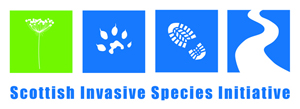The Scottish Invasive Species Initiative Project Conference
The Scottish Invasive Species Initiative Project Conference
On the 6th September the Scottish Invasive Species Initiative held its first ever Project Conference to mark and celebrate the end of the first phase (2017-2023) of the project, funded by the National Lottery Heritage Fund and NatureScot.
The event was held in Aviemore and well attended by delegates from many different environmental organisations, including partnered fishery boards and trusts, and by dedicated volunteers who have worked with us over the years. A wide variety of national and international invasive non-native species (INNS) projects were discussed, including both research and practical management projects.
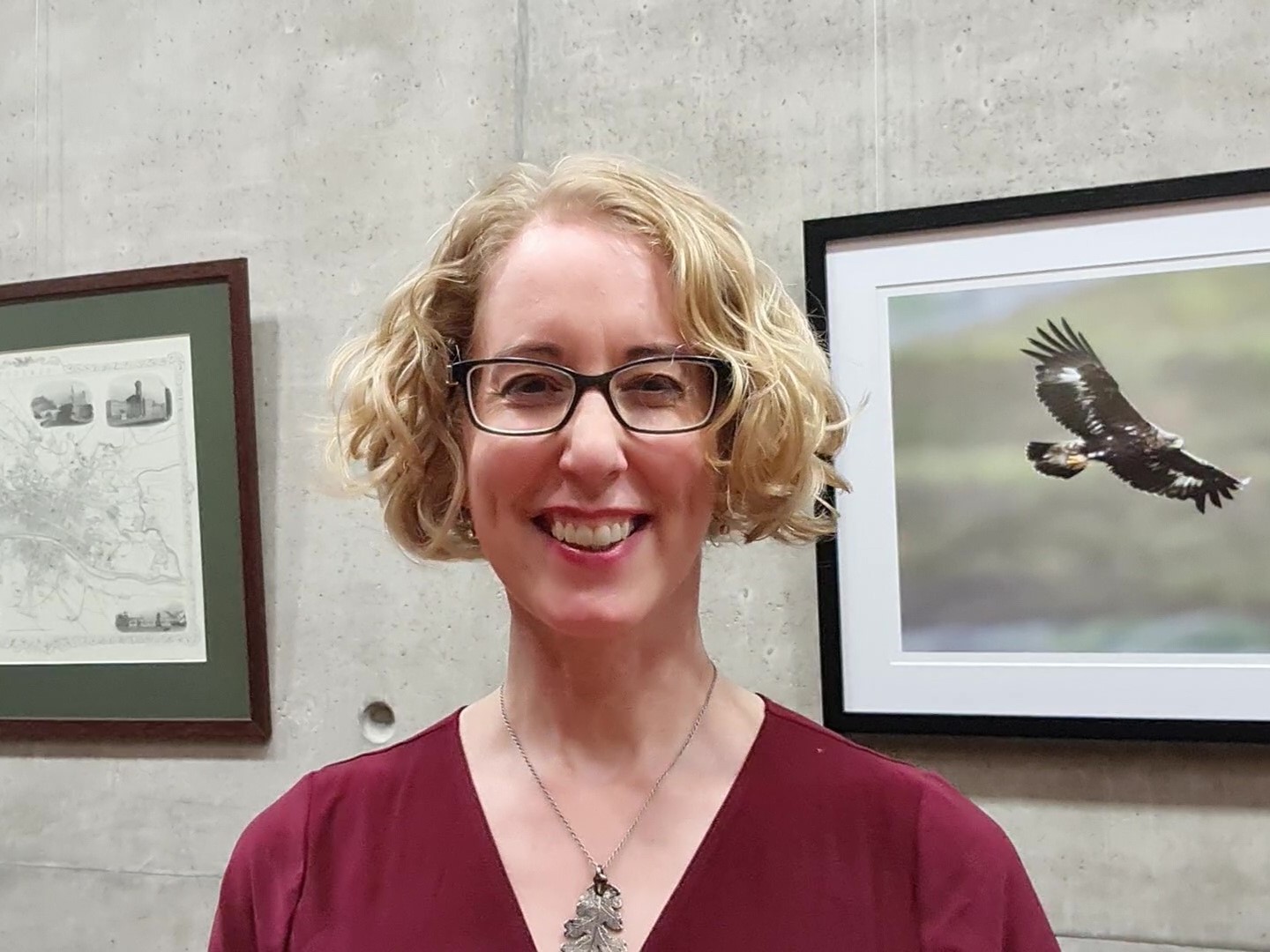 |
||
| Francesca Osowska, NatureScot CEO, opened the event by discussing the impacts of INNS on our environment, economy and way of life | Minister for Biodiversity Lorna Slater recorded her opening speech which highlighted the threats INNS pose to Scottish biodiversity | |
The event was opened with welcoming talks from Lorna Slater, Minister for Biodiversity with the Scottish Government, and NatureScot CEO Francesca Osowska, both highlighting the impacts of INNS on our environment, our economy and our way of life. The Scottish government is currently working on Scotland’s Biodiversity Strategy, setting out goals of halting biodiversity loss by 2030 and reversing declines by 2045. Invasive non-native species present a key threat to biodiversity; a recently published IPBES report found that INNS have a key role in 60% of global plant and animal extinctions.
Francesca Osowska, NatureScot Chief Executive commented: “It was great to take part in the Scottish Invasive Species Initiative conference to hear of progress to date and plans for the future. The event was very well-timed with the publication of a major report on the extent and impact of invasive non-native species by IPBES (Intergovernmental Science-Policy Platform on Biodiversity and Ecosystem Services) two days before the event. This served as a great reminder of the threats and costs invasive non-native species present to our economies and biodiversity and of the need for effective and coordinated action.”
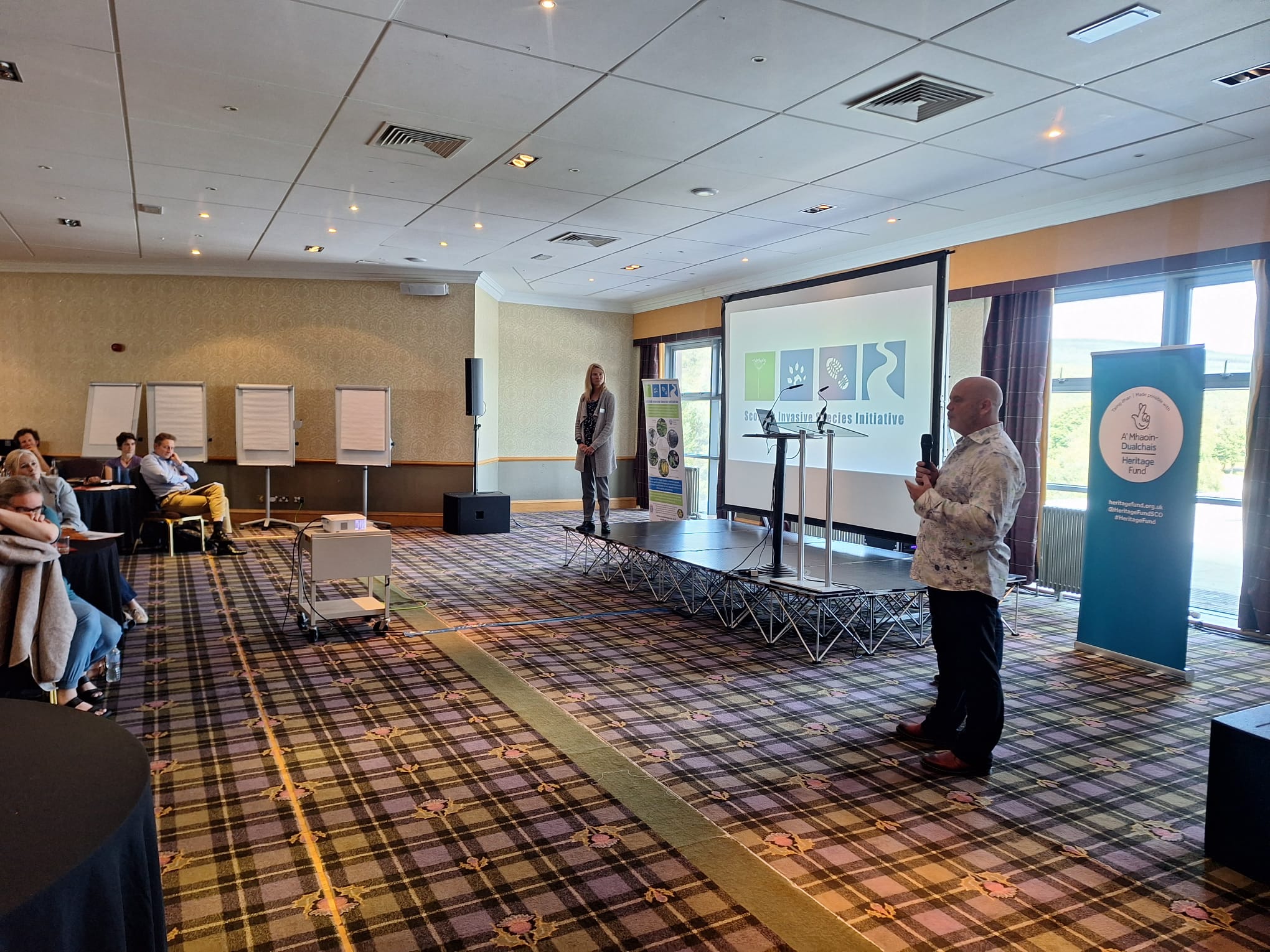 |
||
| The event was well attended by delegates from many different environmental organisations and by SISI project volunteers | SISI Project Manager Callum Sinclair spoke about the importance of communities, volunteers and collaboration | |
In order to tackle invasive species and protect native biodiversity we will need co-ordinated action, collaboration and ambitious projects like the Scottish Invasive Species Initiative. The Project Conference provided an excellent opportunity to meet with others in INNS management in person – a welcome change after several years of virtual meetings – and share our progress, successes and ideas.
Callum Sinclair, Scottish Invasive Species Initiative Project Manager, commented: “We were delighted with the conference and thrilled to welcome so many delegates with an interest in invasive non-native species management to Aviemore. We were particularly pleased to share the day with many of our project volunteers and to include them in the celebration of progress to date and as we get ready for a bigger and better Phase 2 programme. We really hope that through our work, and the efforts of other excellent projects and initiatives, Scotland can be a leading light in the battle against invasive non-native species”.
| Keynote speaker Professor James Russell gave an inspiring talk about the ambitious 'Predator Free New Zealand' project | American mink control projects were covered by several speakers in the invasive mammal control session | |
Amongst our many fantastic presenters was keynote speaker Professor James Russell, who gave an inspiring talk about Predator Free New Zealand and their ambitious plans to eradicate invasive predators by 2050. Native species in New Zealand are particularly vulnerable to introduced predators and the target species in this project are those which have overwhelmingly negative effects on native biodiversity.
Following on from our keynote speaker we had several presenters discussing approaches to invasive non-native mammal control. Karen Muller from the Scottish Invasive Species Initiative, Professor Xavier Lambin from the University of Aberdeen and Professor Tony Martin from the Wildlife Recovery Trust all spoke about projects tackling American mink in northern Scotland, Patagonia and East Anglia – with interesting comparisons between projects aiming for control and those aiming for eradication. Dr Emma Sheehy from Saving Scotland's Red Squirrels also gave a fascinating talk about their work eradicating grey squirrels from the city of Aberdeen. It was wonderful to hear about the progress made so far with this project – and if you’re interested, they’re looking for volunteers!
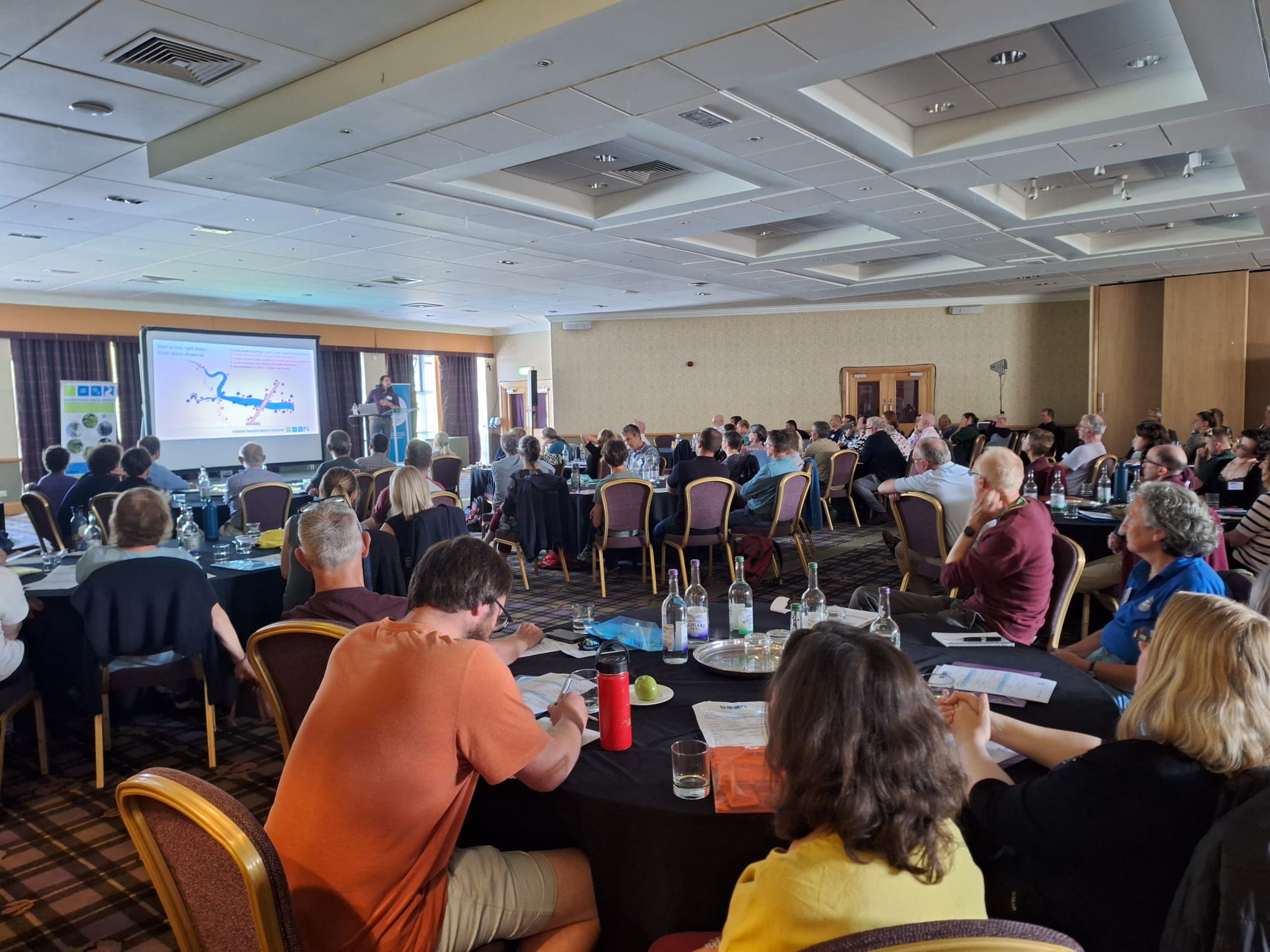 |
||
| SISI Project Officer Mark Purrmann-Charles gave an overview of our strategic approach to tackling invasive plants on a landscape scale | Dr Zarah Pattison gave a fascinating talk on her research looking into the impacts of Himalayan balsam on native habitats | |
Next we turned our attention to invasive non-native plants, which can be very challenging to deal with and each species requires different approaches and control methods. The Scottish Invasive Species Initiative team started things off with Project Officer Mark Purrmann-Charles giving an overview of our strategic approach to tackling invasive plants on a landscape scale - and the importance of working systematically in river catchments. Jane Hamilton, our Volunteer and Communications Officer, covered our Macduff grazing trial which is investigating how sheep can be used to tackle giant hogweed infestations. Rob Dewar from the National Trust for Scotland then spoke about the Trust’s work tackling Rhododendron ponticum on the west coast, helping to protect Scotland's temperate rainforests. Dr Zarah Pattison, from the University of Stirling, rounded off the session with a fascinating talk on the impacts of Himalayan balsam on riparian habitats and ancient woodlands.
To finish the day off Laura Bambini from Biosecurity for LIFE spoke about the importance of biosecurity for Scotland’s globally significant seabird populations. Good biosecurity is essential for all INNS issues as prevention - and early detection with a rapid response – is preferable than trying to deal with an already established invasive non-native species. Finally, Professor Colin Bean from NatureScot gave an interesting overview of pink salmon - an emerging threat in Scotland’s freshwater ecosystems which could lead to a loss of native biodiversity.
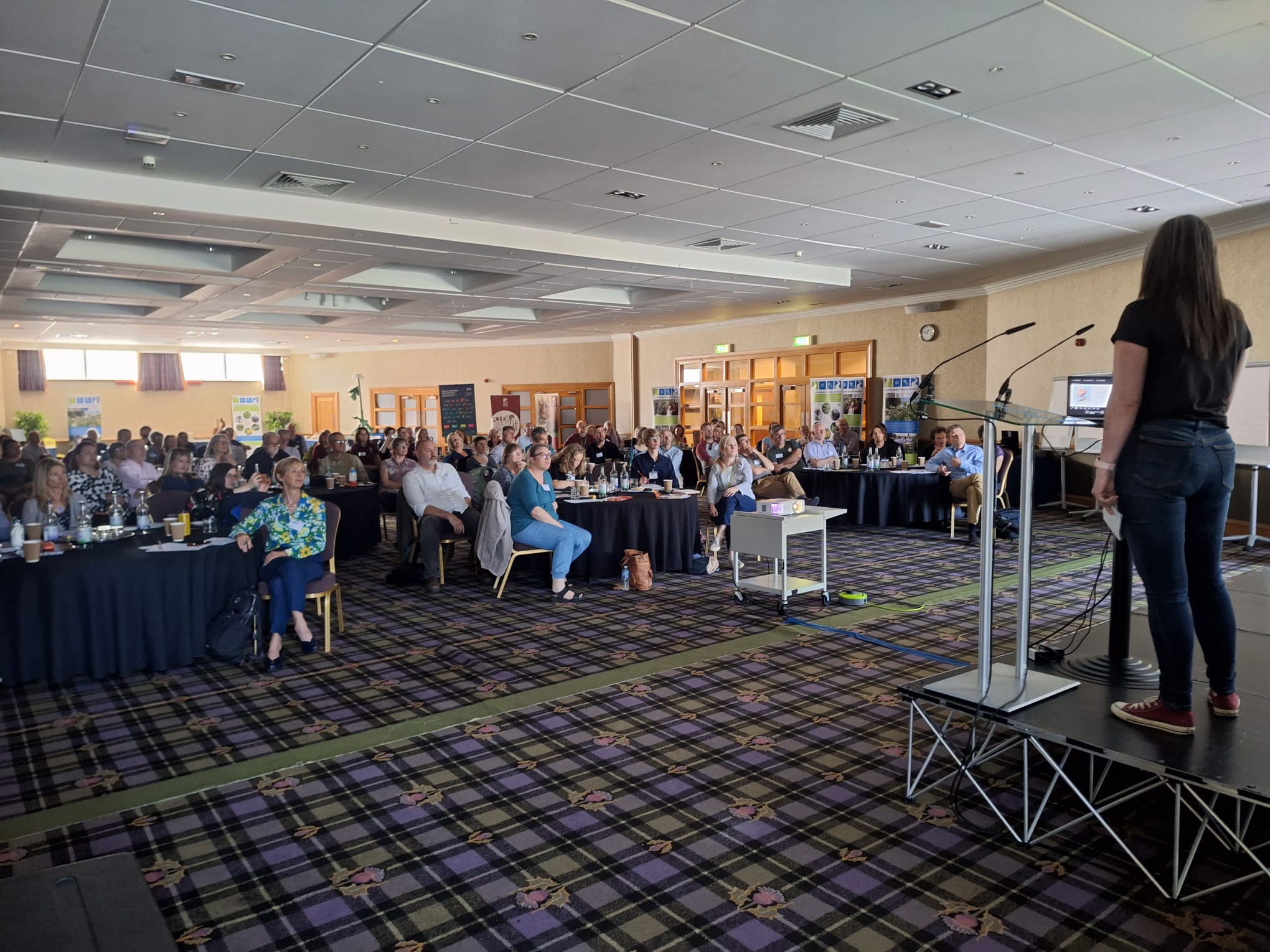 |
||
| Laura Bambini from Biosecurity for LIFE spoke about the importance of good biosecurity for Scotland’s seabird populations | Thank you from the Scottish Invasive Species Initiative to everyone who attended and contributed to this event! | |
All presentation slides are available on our website to view and download. A huge thank you to everyone who attended and contributed to this event!
Thank you also to the National Lottery Heritage Fund and NatureScot, our funders for the first phase (2017-2023) of the Scottish Invasive Species Initiative. This has been a wonderful event to celebrate our successes so far and to look forward to what happens next in Phase 2 (2023 - 2026) with our award from the Scottish Government’s Nature Restoration Fund, managed by NatureScot.
